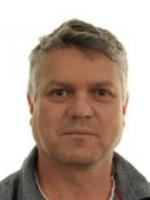Introduction
Global demands for key bio-materials are forecast to increase significantly over the next 20 to 30 years. The economic opportunity presented by these trends has been recognised by the private sector, which is responding with strategies to increase production. The imperative is to find means to achieving these targets in ways that are consistent with other SG policy commitments such as to the United Nation’s Sustainable Development Goals., the Aichi biodiversity targets and the United Nations Framework Convention on Climate Change’s Paris Agreement’s nationally determined commitments (for Scotland now including committing to zero net Green House Gas emissions).
This research assesses the environmental sustainability of different sectors of the rural economy and identifies trade-offs and opportunities for the production and use of bio-materials in a circular economy. It identifies ways for rural industries to co-operate and exploit synergies to reduce their environmental impact and become more circular – especially with regard to bio-materials. The work also includes identification of impact and performance measures more broadly to better understand changes in environmental sustainability.
The models created in this RD have been used to undertake policy-specific work for the Scottish Government – particularly through ClimateXChange - Scotland's centre of expertise on climate change.
Aim of Research
The aim of this RD is to assess the environmental sustainability of different sectors of the rural economy and identify trade-offs and opportunities for the production and use of bio-materials in a circular economy. The key drivers for this research are policies for the circular economy and zero waste domains.
Progress
2021 / 2022
The Programme enhanced the capabilities of MRPs to undertake assessments of sustainability and circularity with both life-cycle and societal metabolism methods used. The biomaterial studies have been effective in looking at cross sectoral material flows and issues of waste management with societal metabolism highlighting the need to consider beyond Scotland consequences of production and consumption if a meaningful assessment of sectors and society are to be made.
Highlights:
- In response to a Scottish Government request this stream of work was refocused on GHG emissions from cattle. The Cattle Tracing Systems analysis and estimates of greenhouse gas emissions from the beef sector. The work specifically focused on using the Beef Efficiency Scheme data to assess the root causes of fertility and mortality rates observable in the CTS population. Using proxy emission factors from the National Inventory for agriculture the emission profile of all animals were modelled for each year and waste emissions estimated from inefficiencies (mortality, fertility, etc).
- Other objectives with greater immediate policy relevance were prioritised with no further development of the Scotland level societal metabolism analysis. The methods will continue to be developed via a research fellowship 2022-25 funded by the Macaulay Development Trust and will inform analysis in the Land use Transformations project of the 2022-27 SRP.
2020 / 2021
Life cycle analysis methods continued to assess emissions from aquaculture – highlighting that across a range of Scottish and global systems feed is the main driver of GHG emissions. The researchers also contributed to EU level analyses of how livestock systems could be made more sustainable. Similarly, the social metabolism analyses highlighted the challenges for EU food and agriculture and environmental policies in coordinating to deliver to the UN Sustainable Development Goals.
Highlights:
- The analysis of aquaculture was developed with a paper in analysing the GHG emissions from global aquaculture and a research brief that reported the GHG emissions from Scottish salmon farming. On terrestrial agriculture, options for improving sustainability have been explored and written up via reports for international audiences (report and seminar on the Future of Livestock for the EC and two short reports on Scottish food GHG for Scotland Food and Drink and the Scottish Government. Each of these reports were requested by policymakers demonstrating the reach of this workstream within Scotland and beyond. In addition engagements with Zero Waste Scotland on Opportunities for Agriculture in a Circular Bioeconomy were undertaken
- Policy integration in delivering the EU sustainability and climate change goals: Theme 2 SEFARI scientists along with Theme 1 researchers contributed to the completion of the H2020 MAGIC project – using societal metabolism methods. The report on the interactions between CAP and the delivery of the UN Sustainable Development Goal 2 (Zero Hunger) highlighted the negative externalities of imported livestock feeds have for GHG emissions and habitat loss. The analyses underpinned policy briefings, an online mapping application and were deliberated on at events with the European Commission and European parliamentarians and later in a seminar with SG analysts and policy makers.
2019 / 2020
The two strands of work, Circular / Bio-Economy and Societal Metabolism Analysis have both continued to be developed. The former uses lifecycle assessment methods to identify hotspots (locations or processes) with high levels of consumption or production of biomaterials. The latter assesses the extent and intensity of resource use especially the dependence on traded materials. In both cases the year has seen greater levels of interaction with stakeholder groups in industry and government.
Circular / Bio-Economy added analysis of biorefining and bio stimulants and options for analysis of new materials e.g. marine algae extracts. The analysis was discussed with Zero waste Scotland and private sector businesses (SEM and AquaScot).
Societal Metabolism Analysis integrated data from the Farm Accounts Data Network databases to characterize the funds and flows of materials used within EU agriculture and their impacts on the environment. The analysis further developed methods for assessing the degree of dependence of livestock systems in the EU on imported feedstuffs, highlighting a “missing footprint” in assessing the sustainability of EU farming systems. The linkages within the model between production and supply systems to satisfy societal demand emphasizes the relevance of the EU Farm-to-fork strategy if the EU sustainability goals are to be achieved. A Scotland level presentation had been scheduled for March 2020 but was postponed
Highlights:
- The societal metabolism analysis of how CAP interacts with the EU commitments to UN Sustainable Development Goal 2 (Zero Hunger) was presented to European Commission staff and at an EU Parliamentary breakfast meeting. A variety of other reports. briefing materials and news articles were also created.
- Drawing on expertise a report was commissioned by the Joint Research Centre of the European Commission to review the evidence regarding the current and potential use of animal breeding to reduce GHG emissions. The work also comments on the likely impact of breeding on farm economics, identifies barriers to achieving GHG reductions via breeding and highlights some future research needs.
2018 / 2019
The work has developed and tested new analytical methods (e.g. life-cycle and societal metabolism analyses) that improve our ability to evaluate alternative technologies, biomaterial flows and management systems for Scotland’s agri-food systems. This includes assessment of their feasibility, in bio-physical terms, their viability in socio-economic terms and their compatibility with other aspects of the technosphere. Analyses have been conducted at a range of scales and has yielded insights that are contributing to options appraisals for both industry and policy clients.
Circular / Bio-Economy models have been developed to appraise biomaterial flows associated with food waste, cattle feed production and cattle manures. Further, nutrient recovery from food waste and recovering plant protein for livestock feed have been identified and assessed as potential approaches to improving the efficiency/circularity of resource use. Data required to undertake an appraisal of the feasibility and cost-effectiveness of grass bio refining have also been identified and preliminary analysis complete. Societal Metabolism Analysis work has benefited from theoretical and methodological developments being undertaken within the H2020 project MAGIC where a study looking at how CAP contributes to the sustainability goals of the EU was undertaken using the societal metabolism approach. Opportunities to demonstrate the approach with Scottish Government will be taken up in 2019/20.
Highlights:
- Key hotspots (food waste, cattle feed production and cattle manures) and two potential approaches to improving the efficiency/circularity of resource use have been identified: (a) nutrient recovery from food waste and (b) recovering plant protein to be used as livestock feed. Models have been developed to undertake appraisal of these. Presented and discussed at SRUC Biorefinery workshop January 2019 and in various publications.
2017 / 2018
The Circular Bio-Economy work refined the methods of assessing material flows developed in year 1: principally focusing on Scottish cattle systems and circularity opportunities (such as anaerobic digestion) but also in looking at use of distillers’ grains. The work helped quantify how carbon, energy, nitrogen and phosphates flow through cattle farming systems (the largest sector of Scottish agriculture). A model was developed to quantify the physical flows in Scottish cattle systems, e.g. the amount of feed and fertiliser entering, the amount of meat and milk produced and the losses via different pathways, such as nutrient losses during crop production and post-farm processing. The analytical insights provided to policy and stakeholders through this work are important in assessing climate change impacts that result from farm system changes (driven by Brexit or other factors) or adoption of new technologies. Working with staff from the Autonomous University of Barcelona, the first version of a Societal Metabolism Analysis framework was created that can be used to evaluate narratives about the agri-food system, particularly those that underpin SG policy positions. The framework is being tested on Scotland’s livestock systems using livestock movement data from the Animal and Plant Health Agency via the Centre of Expertise for Animal Disease (EPIC), and in the first instance on beef and dairy cattle systems. The work formed the basis for a case study in a report on Nexus Security in the MAGIC H2020 project. The ways in which these analyses can be used with SG policy teams and how the insights from the analysis can best be communicated continue to be investigated.
Highlights:
- Further development of models and application of them to questions within the SRP (i.e. use of distillers’ grains, flows in Scottish beef supply chains). The models were developed with the support of other organisations (e.g. OECD, FAO) and applied to nutrient budgeting and aquaculture.
- Work Package staff are collaborating with researchers of the Institute of Environmental Science and Technology in Barcelona, and with staff from the Centre of Expertise for Animal Disease (EPIC).
2016 / 2017
As a new strand of work, the Circular / Bio Economy research started to evaluate and develop new methods to assess circularity and sustainability both for specific bio-materials and more widely in the agri-food sector as whole. The focus of the work was on developing models, sourcing appropriate data and beginning interactions with potential stakeholders. Excel based models were created to enable the quantification of key food bio-material flows from production and consumption within Scotland. These models were used to identify hot spots and analyse the effects of measures to improve resource efficiency – particularly around cattle slurry management.
Two measures for valorising cattle excreta were analysed: (a) using it as a feedstock in anaerobic digestion and (b) converting it to a high protein feed material using insects. A Societal-Metabolism Analysis (SMA) of the agri-food system is being built working with researchers at Institute of Environmental Science and Technology and EU-H2020 MAGIC. The SMA analyses: stocks, funds and flows (e.g. land, energy, water, nutrients and money) and the openness of agri-food sector (e.g. dependencies on imports and the value-added accruing within Scotland). The model is intended to assess narratives that underpin policy positions in terms of their technical feasibility (biophysical), their viability (socio-economic) and their desirability (distributional).
Highlights:
- Development of excel-based models enabled the quantification of some of the main food bio-material flows from production and consumption within Scotland. These models were used elsewhere within the Strategic Research Portfolio (SRP) and further developed, in projects outwith the SRP.
Future Activities
Much of the capability in this RD is embedded in follow-up projects in the 2022-27 SRP. The research informs and evolves into JHI and SRUC projects relating to Topics: C3 Land Use; C4 Circular Economy; and C5 Large Scale Modelling.
Selected Outputs
- Sykes, AJ, Macleod, M, Eory, V, et al. Characterising the biophysical, economic and social impacts of soil carbon sequestration as a greenhouse gas removal technology. Glob Change Biol. 2020; 26: 1085– 1108.
- G.R. Salmon, M. MacLeod, J.R. Claxton, U. Pica Ciamarra, T. Robinson, A. Duncan, A.R. Peters, (2020) Exploring the landscape of livestock ‘Facts’. Global Food Security, 25
- Impact of animal breeding on GHG emissions and farm economics
- MacLeod, M., Leinonen, I., Wall, E., Houdijk, JGM., Eory, V., Burns, JB., Vosough Ahmadi, B, Gomez-Barbe, M (2019) Impact of animal breeding on GHG emissions and farm economics. Joint research Centre of the European Commission.
- MacLeod, M., Hasan, M. R., Robb, D. HF. & Mamun-Ur-Rashid, M., (2019) Quantifying and mitigating greenhouse gas emissions from global aquaculture. Food and Agriculture Organization of the United Nations. 49 p. (FAO Fisheries and Aquaculture Technical Paper; no. T626)
- Matthews, K.B., Waylen, K., Giampietro, M. (2020) A systems perspective on sustainable agriculture – the new ‘MAGIC’ approach. Parliamentary breakfast hosted by the Renew Europe group, European Parliament, 30 January 2020.
- Leinonen, I., Eory, V., MacLeod, M., Sykes, A., Glenk, K., and Rees, R. (2019) Comparative analysis of farm-based carbon audits
- Leinonen, I. (2018) Nutrient dynamics in Scottish livestock supply chains
- Leinonen, I., Eory, V. and MacLeod, M. (2018) Applying a process-based livestock model to predict spatial variation in agricultural nutrient flows in Scotland. Journal of Cleaner Production, Volume 209, pp180-189
- Leinonen, I., Macleod, M. and Bell, J. (2018) Effects of Alternative Uses of Distillery By-Products on the Greenhouse Gas Emissions of Scottish Malt Whisky Production: A System Expansion Approach. Sustainability 10(5)
- MacLeod, M. (2018) Biomaterial flows in Scottish cattle supply chains: supply chain analysis Leaflet produced for SEFARI.
- MacLeod, M. (2018) Development of FISH-e, GHG calculator for aquaculture
- MacLeod, M., Sykes, A., Leinonen, I., Eory, V., Creamer, E., and Govan, S. (2018) Emission intensity of Scottish agricultural commodities
- Leinonen, I., MacLeod M., and Bell, J. (2017) Distillery by-product use and greenhouse gas emissions from Scottish malt whisky production
- Popoff, M., MacLeod, M., and Leschen, W. (2017) Attitudes towards the use of insect-derived materials in Scottish salmon feeds. Journal of Insects as Food and Feed 3(2) 131-8
- Robb, D.H.F., MacLeod, M., Hasan, M.R. & Soto, D. (2017) Greenhouse gas emissions from aquaculture: a life cycle assessment of three Asian systems. FAO Fisheries and Aquaculture Technical Paper No. 609. Rome, Italy, FAO. 92 pp.
- MacLeod, M., Rees, R., Watson, C., Thomson, S., Boyd, I. and Bell, J. (2016) Review of options for reducing greenhouse gas emissions via cattle slurry management in Scotland
- Rooke, J.A., Miller, G., Flockhart, J., McDowell, M. & MacLeod, M. (2016) Nutritional strategies to reduce enteric methane emissions
- Blackstock, K.L.; Juarez-Bourke, A.; Waylen, K.A.; Matthews, K.B. (2020) Unclear route map for EU SDG journey. The Nexus Times, XIII,
- Blackstock, K.L.; Matthews, K.B.; Miller, D.; Wardell-Johnson, D.; Renner, A. (2020) Insights for the EU farm to fork strategy - shaky foundations for laudable ambition? H2020 MAGIC Project, Policy Brief, 2pp.
- Blackstock, K.L.; Waylen, K.A.; Juarez-Bourke, A.; Hague, A.; Matthews, K.B. (2020) Implementing sustainable development goals: Taking the European Union beyond business as usual? H2020 MAGIC Project, Policy Brief, 2pp.
- Leinonen, I., Iannetta, P.P.M., MacLeod, M.J., Rees, R.M., Russell, W., Watson, C. and Barnes, A.P. (2020) Regional land use efficiency and nutritional quality of protein production, Global Food Security, Volume 26, 100386, ISSN 2211-9124,
- MacLeod, M.J. (2020) What are the environmental impacts of egg production? Food choices for a healthy planet
- MacLeod, M.J.; Hasan, M.R.; Robb, D.H.F.; Mamun-Ur-Rashid, M. Quantifying greenhouse gas emissions from global aquaculture. Sci. Rep.2020,10, 11679. Quantifying greenhouse gas emissions from global aquaculture | Scientific Reports (nature.com)
- Matthews, K..B.; Blackstock, K.L.; Waylen, K.A.; Juarez-Bourke, A.; Miller, D.G.; Wardell-Johnson, D.H.; Rivington, M.; Hague, A.; Fisher, D.; Renner, A.; Cadillo-Benalcazar, J.; Schyns, J.; Giampietro, M. (2020) Report on EU sustainability goals: insights from quantitative story telling and WEFE nexus. MAGIC (H2020-GA 689669) Project Deliverable 5.1, 136pp.
- Matthews, K.B.; Blackstock, K.L.; Miller, D.; Wardell-Johnson, D.; Renner, A. (2020) Openness insights for EU farm to fork strategy: moving from supply to demand management. H2020 MAGIC Project, 2pp.
- Matthews, K.B.; Blackstock, K.L.; Waylen, K.A. (2020) Institutionalised uncomfortable knowledge: benefit or cost. Uncomfortable Knowledge Hub, Inaugural Webinar.
- Matthews, K.B.; Miller, D.; Wardell-Johnson, D.; Renner, A.; Giampietro, M. (2020) Farm accountancy to farm sustainability: lessons from MAGIC for the reform of the farm accountancy data network. H2020 MAGIC Project, Policy Brief, 2pp.
- Peyraud, J-L and MacLeod, M.J. (2020) Future of EU livestock: how to contribute to a sustainable agricultural sector | European Commission (europa.eu) Report for the European Commission Directorate-General for Agriculture and Rural Development Luxembourg: Publications Office of the European Union, 2020 PDF ISBN: 978-92-76-20633-0 doi: 10.2762/810306
- Riddell, H. and MacLeod, M.J. (2020) Greenhouse gas emissions from Scottish venison production. Rural Policy Centre Research Briefing
- Tian, H., Xu, R., Canadell, J.G. et al. (inc. MacLeod, M.J.) A comprehensive quantification of global nitrous oxide sources and sinks Nature 586, 248–256 (2020).
- Wardell-Johnson, D.; Gandossi, G.; Matthews, K.B.; Miller, D.G.; Renner, A.; Cadillo Benalcazar, J.J.; Giampietro, M. Mapping software and data analysis for societal metabolism analysis @ Hutton. Land Systems Teams Webpage.
- Henderson, B., Lankoski, J., Flynni, E., Sykes, A., Payeni, F. and MacLeod, M. (2022), Soil carbon sequestration by agriculture: Policy options, OECD Food, Agriculture and Fisheries Papers, No. 174, OECD Publishing, Paris.
- Jonsson, N.N., MacLeod, M., Hayward, A., McNeilly, T., Ferguson, K.D. and Skuce, P.J. (2022) Liver fluke in beef cattle – Impact on production efficiency and associated greenhouse gas emissions estimated using causal inference methods. Preventive Veterinary Medicine, Volume 200, 2022
- Payen, F.T., Moran, D., Cahurel, J-Y., Aitkenhead, M., Alexander, P., and MacLeod, M. (2022) Factors influencing winegrowers’ adoption of soil organic carbon sequestration practices in France. Environmental Science & Policy, Volume 128
- Payen, F.T., Sykes, A., Aitkenhead, M., Moran, D., Alexander, P., Moran, D., and MacLeod, M. (2022) Predicting the abatement rates of soil organic carbon sequestration management in Western European vineyards using random forest regression Cleaner Environmental Systems, Volume 2.




